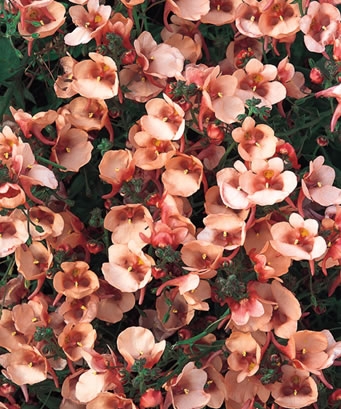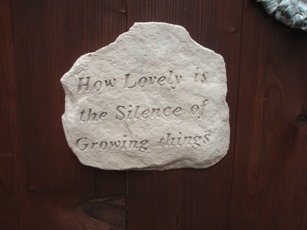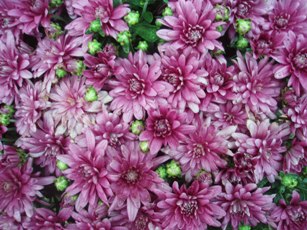 Ground covers are like a fancy carpet in the garden. They add richness and beauty under trees and become the stars of the show in sunny apots. Ground covers reduce maintenance by preventing weeds and reduce watering by acting as a living mulch.
Ground covers are like a fancy carpet in the garden. They add richness and beauty under trees and become the stars of the show in sunny apots. Ground covers reduce maintenance by preventing weeds and reduce watering by acting as a living mulch.
When choosing ground covers, assess the conditions of the area you want to plant. .jpg)
- Is it in the sun or shade?
- Is it a naturally moist area or dry?
- Do you intend to water it or go with our natural cycle of wet in the winter and dry in the summer?
- Matching the plant to the site conditions will ensure success.
When designing a plant layout I consider whether I want a sweep of the same plant or a tapestry effect with a variety of plants. Using more than one type of plant allows me to work with foliage contrast adding pattern to my composition.
Splash color and texture on the ground under trees and shrubs with shade-loving ground covers like Serbian bellflower. It needs little water, blooms with star-shaped 1/2" blue flowers in spring and summer and spreads vigorously without becoming invasive. Heart shaped foliage covers this mounding plant.
Lamiastrum is another perennial ground cover for partial or full shade. Silvery variegated foliage can lighten up dark corners and small yellow flowers are a bonus in late spring.
To preserve good visibility along a walkway or lawn, use low-growing, long blooming perennials like diascia, Santa Barbara daisy and achillea. All prefer full sun and moderate to little water.
Diascia is a So. African native with 1/2" wide flowers that appear on the ends of spreading stems. Pink used to be the only flower color but now hybridizers have developed apricot, coral and lavender, too. Diascia’s are hardy to 0 degrees and bloom nearly continuously if old flowers are cut off after flowering.
 Santa Barbara daisy has become a popular ground cover as it reseeds readily and can cover a large area fairly quickly. This 10-20" tall trailing plan spreads rapidly to about 2 ft, making it a great filler between larger shrubs and perennials. Dainty 1/3" pinkish white flowers cool down hot sunny spots. Trim this plant several times a year to keep tidy and encourage blooming.
Santa Barbara daisy has become a popular ground cover as it reseeds readily and can cover a large area fairly quickly. This 10-20" tall trailing plan spreads rapidly to about 2 ft, making it a great filler between larger shrubs and perennials. Dainty 1/3" pinkish white flowers cool down hot sunny spots. Trim this plant several times a year to keep tidy and encourage blooming.
Achillea or yarrow are among the most carefree perennials for summer and early fall bloom. They spread by underground runners and make great ground covers. Keep this in mind if you have a limited space. The most common variety is Summer Pastels but if you want to add a punch of color to your garden, plant Cerise Queen with it’s cherry red flowers.
Rockrose provide large-scale cover for expansive sunny areas. Their dense strong root systems help prevent soil erosion. Choose from white, pink or magenta flowers on plants varying from 1-5 ft. high depending on which variety you choose. This Mediterranean native is fast growing and drought tolerant.
To create stunning combinations of ground cover plants. choose 5 or 6 styles and repeat them in small drifts to carry the eye through the composition.
Add grasses for linear texture. Good candidates are Blue Oat grass, a non-spreading clumping grass with silver leaves. Carex Ice Dance is a spectacular evergreen ornamental grass with dark green narrow foliage edged with a pure white border. Ice Dance spreads by underground runners in partial sun or shade.
Take the opportunity to survey your garden for bare spaces that can come alive with added texture and color.



 Ground covers are like a fancy carpet in the garden. They add richness and beauty
Ground covers are like a fancy carpet in the garden. They add richness and beauty.jpg)
 Santa Barbara daisy has become a popular ground cover as it reseeds readily and can cover a large area fairly quickly. This 10-20" tall trailing plan spreads rapidly to about 2 ft, making it a great filler between larger shrubs and perennials. Dainty 1/3" pinkish white flowers cool down hot sunny spots. Trim this plant several times a year to keep tidy and encourage blooming.
Santa Barbara daisy has become a popular ground cover as it reseeds readily and can cover a large area fairly quickly. This 10-20" tall trailing plan spreads rapidly to about 2 ft, making it a great filler between larger shrubs and perennials. Dainty 1/3" pinkish white flowers cool down hot sunny spots. Trim this plant several times a year to keep tidy and encourage blooming.